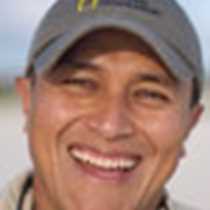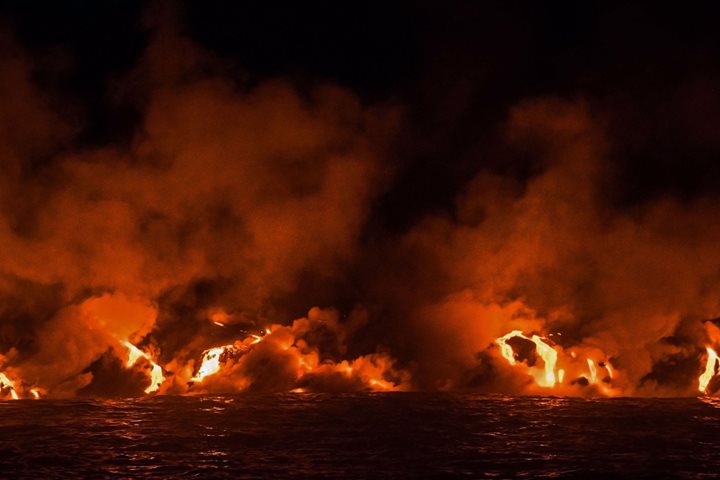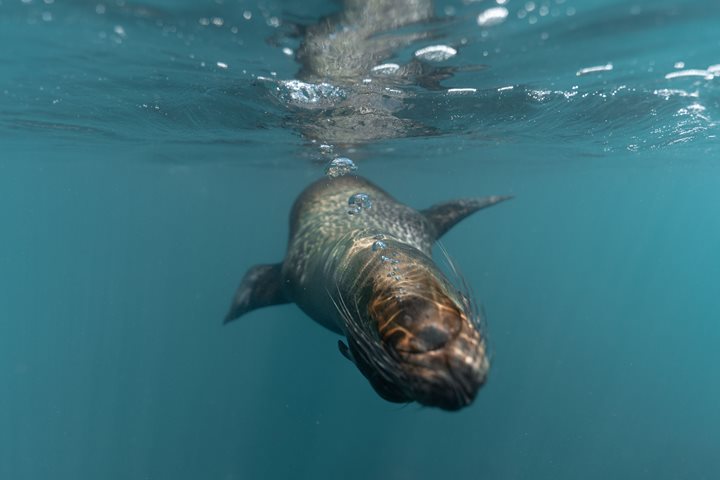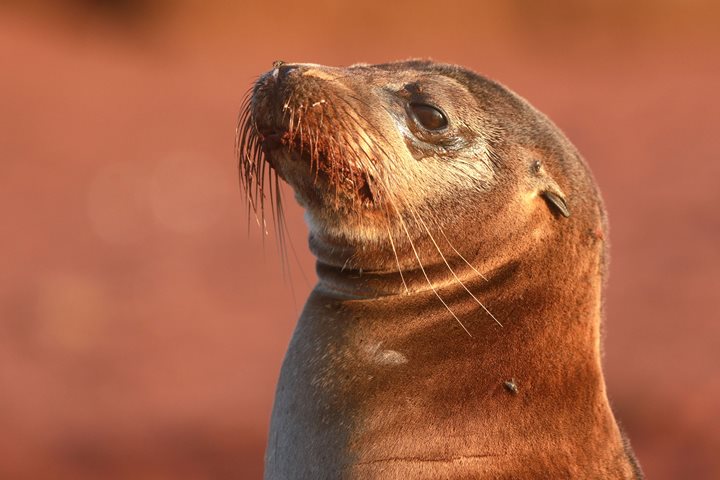Today we reached the western area of the Galapagos Archipelago, an area that is known for its nutrient-rich waters and the abundance of life that it sustains. Early in the morning we spotted an aggregation of around one hundred common dolphins, a great way of starting our day. After a delicious breakfast, we celebrated a warm ceremony for crossing the Equator line. Later on, we took a zodiac ride along the volcanic landscape of north Isabela Island. The geological features and the great amount of birds and sea lions made this ride really exciting. To end up our morning with another adventure, we snorkeled on Punta Vicente Roca, a great site to spot dozens of green sea turtles swimming around us. After lunch, we worked with our Global Explorers to produce a short movie trailer as part of our educational experiences on board and in the field. In the afternoon, we navigated south to visit Fernandina Island. This island has the greatest number of marine iguanas in the world, and is a fascinating opportunity for wildlife and landscape photography. To end up our day, we enjoyed a wine tasting on upper deck while enjoying an awesome sunset.
- Daily Expedition Reports
- 03 Apr 2018
Fernandina Island, 4/3/2018, National Geographic Islander
- Aboard the National Geographic Islander
- Galápagos
José Guerrero, Naturalist/Certified Photo Instructor
José Guerrero Vela is an Ecuadorian permanent resident of the Galapagos. His mother was born in the islands and his grandfather was one of the first generation of teachers in the Galapagos, which has always inspired him to promote education as the ma...
Read MoreJulio Rodriguez, Videographer
Born and raised in Ecuador, the son of Spanish and American parents, Julio developed a passion for storytelling and environmental conservation at an early age. After majoring in History at Carleton College (Minnesota), with a thesis on the Basque ant...
Read MoreShare Report
Related Reports
11/23/2022
Read
National Geographic Islander II
Isabela and Fernandina
Our day began with the chance to point out a lot of interesting geological features as we enjoyed Zodiac tours along a massive flank of Ecuador Volcano on Punta Vicente Roca. In the afternoon, we took a sunny walk on Punta Espinoza on Fernandina Island. We spotted many iguanas, and a bunch of sea lions hanging around, too.
11/22/2022
Read
National Geographic Islander II
North Seymour & Rabida Islands
Relatively small and low compared to neighboring Santa Cruz, North Seymour is located to the north of Baltra. The island is dry with predominantly low shrubs, like prickly pear cacti. The incense trees are bare during the dry season. Seabirds like frigatebirds and blue-footed boobies nest on the island, and sea lions rest on the sand when they are not fishing. Land and marine iguanas also live here. Rabida is in the middle of the archipelago and has a striking red sand beach. We observed a small colony of sea lions of all ages resting or nursing. Behind the beach, American flamingos nest in a brackish lagoon. This island is full of contrasts and wildlife that we enjoyed observing during this day of expedition.









